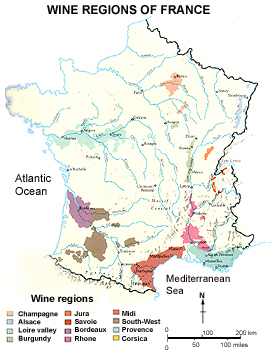| |


Most French labels are models of clarity. The status of the wine will be obvious: look for the words 'Appellation Controlee", "Vin Delim-ite de Qualite Superieure", or "Vin de Pays", to establish region of origin and status. Table wines carry none of these terms, but must use the words "Vin de Table".
Each label includes the address of the person or firm bottling the wine. In the case of vins de table, this is sometimes a post code to avoid con-fusing the consumer by stating a name which is the same as that of an AOC. The first two digits of a French post code give the departement in which the wine was bottled - not made, note, but bottled. This can give a clue to the style of a table wine. Many negociants are based in Bordeaux (33 is Gironde), or the Loire (44 for the Pays Nantais, 49 for Angers and Saumur). A 21 code indi-cates the Cote-d'Or departement, with 71 for the Macon and Chalon dis-tricts and 69 for Beaujolais. Mer-chants in Chablis use the code 89.
It is risky to deduce too much from the code, but wines do appear that are made from young vines in AOC vineyards. These can only be called "Vin de Table", and if this is suspected (or heavily hinted by words like "Jeunes Vignes" on the label) a glance at the code will give a clue to where the wine comes from. It could, of course, have been trucked across France and merely bottled there. The risk is the buyers'.s
|
|
|
|




